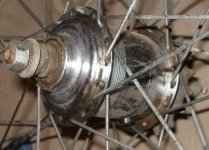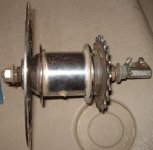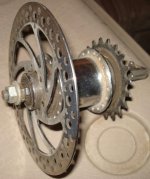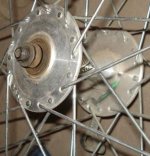12p3phPMDC
1 kW
- Joined
- Mar 16, 2009
- Messages
- 462
http://cvt.com.sapo.pt/ivt/ivt.htm
Check this page out ..... pretty cool IMO.
Check this page out ..... pretty cool IMO.
I didn't have any problem. You won't learn anything about how it works until the patent is published, though.....amberwolf said:Unfortunately the person does not respond to contact attempts
I got lucky on the hubs and got some from the city dump via Spinningmagnets and Ejoness. They're old and apparently well-used Shimano 333's and Sachs types (2 of each). I also have an SA from the same era (70s or 80s) found at a bike swap meet not long after I got those. I'm still working on how to build a disc-brake adapter for them, too, probably going to layer some aluminum panel scraps together and cut on the lathe, bolt them to holes drilled between the spoke holes on the flanges.zap said:I really wanted to use a Sram DualDrive on Woody to help with the chain path but they're so darn expensive and I was having a hard time finding a Strumey Archer at a decent price. I've never even seen a DualDrive and it's probably been around 4 decades since I've been on anything with a Strumey but I assumed if I went that route I'd need a little more precision shifting and would probably need to go to some kind of stepper motor control to get the precision.
Not familiar with the LandRider; looked it up on google and found it uses weights to shift, I think. I'd probably instead be basing it on current draw from the motor, since the front wheels would both be motorized, and the pedals only run the rear wheel. As the current draw increases beyond a setpoint I'd have to determine, it'd trigger a shift down. As it decreases below a slightly different (lower) setpoint, it'd shift up. I'd likely also put +/- buttons on the bars, that would override that automatic shifter until I press a "cancel" button.What is your idea for taking care of the automatic side of things on your trike? Something like the LandRider or are you leaning towards something electronic?




.What it might come down to is fixing the hubs so they have no freewheel, then putting the brake rotor on the sprocket mount along with the sprocket itself, or putting the rotor on the motor's axle hub instead, and having to deal with the braking forces going into the drive chain.

